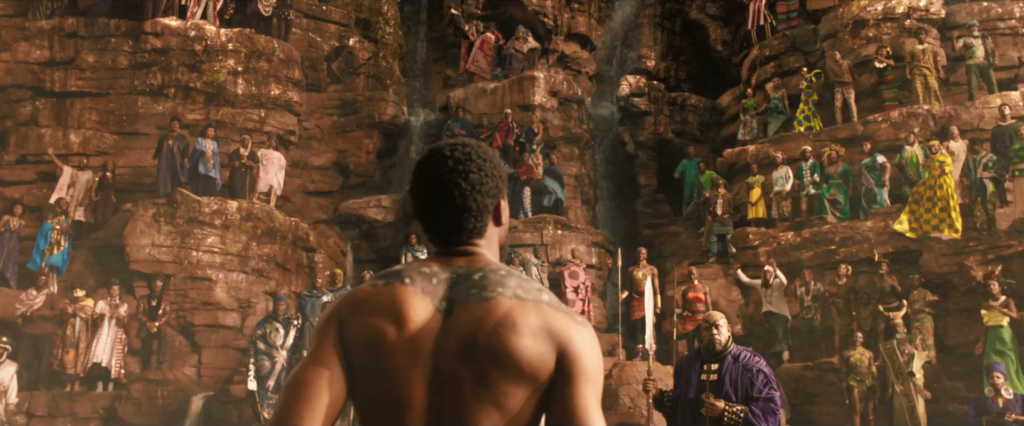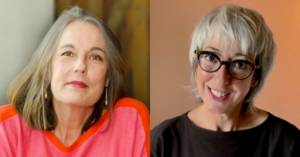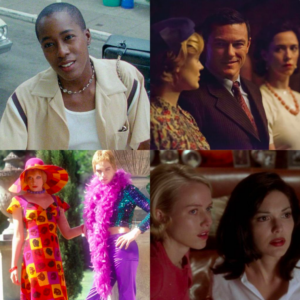4 min read
Heroes, Collectives, and ‘The Black Panther’

Photo courtesy of Marvel.
This piece was originally published in 2018 on Philanthropy News Digest.
In the classic monomyth, or hero’s journey, an individual goes on an adventure, faces and overcomes a challenge, and, as a result of that confrontation, returns home transformed. But the monomyth has long had its critics, who cite its misogyny, imperialistic slant, and tendency to exacerbate division through its focus on lone heroes and isolated villains. It’s time to reconsider its ubiquitous use.
For some time now, I’ve warned activists and communications professionals that their well-meaning use of the monomyth framework can backfire. The familiarity of hero and villain, and of an easy-to-follow storyline, can be comforting. But people can tune out (if not actually resent) such pat and seemingly unrepresentative plots. Indeed, the embrace of simplicity and failure to honor diversity, complexity, and ambiguity can be counter-productive.
For example, elevating someone who has escaped a situation of intimate partner violence into a hero may cause those who remain trapped in such situations to feel like hapless victims. Likewise, pro-choice activists who choose to portray women who have had abortions as heroes may cause some women who are ambivalent about their decision to feel like a villain in their own stories.
While there are often good reasons to share a story that elevates a protagonist to hero status — and by extension, invites listeners to imagine themselves as heroic protagonists — the technique should be carefully deployed.
Even if we acknowledge that the hero is one person among many, and that the focus on her story is meant to be emblematic of a larger story, we are still categorizing her as good or bad, heroic or villainous.
By portraying a successful client as a hero, could you be alienating potential clients who find it difficult to see themselves as heroic? By congratulating the user of your program or service as a warrior, might you be implying that those who don’t benefit are losers? And by focusing on the heroic individual, might you be marginalizing other players in the story? As my creative partner Jay Rhoderick points out, “The spotlight inherently creates a shadow — and who’s left standing in the shadows, unheralded?”
So maybe the hero’s journey framework isn’t your best option. Communicating success stories about your programs or advocacy may not require an individual hero. Maybe, instead, the focus should be on the collective. Might the success you envision for your organization be the product of many actors, impacting a multitude of people?
I recently met and heard Eric Motley, executive vice president of the Aspen Institute (and now, in 2023, VP at the National Gallery of Art), speak about his memoir Madison Park, A Place of Hope. Founded by a group of freed slaves in 1880, Madison Park is the small community in Montgomery, Alabama, where Motley grew up. Although ostensibly the story of his upbringing, Madison Park itself — the place and its people — is the main character in Motley’s memoir.
As Eric explained at our luncheon, the community rallied around him when he was a young boy and adolescent, investing its time, money, and attention in his future. His is a story not of individualistic triumph, but of grace, gratitude, and collective action. As a listener, I was invited not to merely identify with the young Motley, but to imagine myself as a member of the collective and a contributor to its success.
Reid Hoffman, co-founder of LinkedIn and co-author of The Startup of You blurbs Motley’s memoir with this: “Whatever attributes we ourselves bring to the table, our networks propel us further.” And promotional materials for the book note that “[t]hrough the belief, persistence, faith, and support of his community, [Motley] improbably made his way to the Oval Office as special assistant to President George W. Bush.”
A different example of heroic collectivism was evident in my recent work with the harm reduction community. The women I worked with, all of whom have been impacted by drug use, chose upon reflection to move away from simple, stigmatizing, and individualistic stories and focus instead on shifting the public discourse to complicated, respectful, and collective stories of pain existing alongside love.
Individualistic stories about drug use and recovery can be shaming and, ultimately, victimizing and disempowering. Liberation is best provided through stories of heroic communities. As one woman in the group said: “We need stories of people who love us and how we love other people.”
A fictional but fun and somewhat more complicated example is presented in the blockbuster film The Black Panther. Unlike other superheroes, the Black Panther’s backstory is about Wakanda the place. T’Challa, the Black Panther, is the literal embodiment of the nation of Wakanda, his power coming from the land.
Alonso Duralde, in his review of the movie, explains:
What [stands] in T’Challa’s way are the harsh realities of politics and statesmanship, as he learns a dark secret from his father’s past that casts a pall over a land that is a paradise on Earth. Wakanda, you see, was built on the site where a meteorite made of pure vibranium (the metal from which Captain America’s shield was forged) crashed. It’s made the Wakandans technologically advanced, but they’ve kept their wealth and wizardry a secret from the world.
One of the most dramatic — and relevant — storylines the film explores is whether or not advanced societies owe it to the global community to share their discoveries rather than keep their bounty to themselves. (Or as one character asks, putting none too fine a point on it, do we build bridges or erect barriers?)…
Classic literary analysis teaches that all stories contain one of three core conflicts:
- Personal / Internal
- Conflict between two people (a protagonist and an antagonist)
- External (such as a natural disaster)
In fact, as the “creative collaboratory” Intelligent Mischief points out:
Most Western made movies that depict blackness shed light on black people’s oppression, or black people succeeding in the face of oppression, or black people succumbing to oppression. Our movies are about black people escaping slavery, escaping poverty, shifting narratives, defying stereotypes. Essentially we are depicted as a people who are inherently in struggle….
In the movie The Black Panther, the conflict is Wakanda versus Wakanda: the community reckoning with its own isolationism. The most advanced nation on earth questions whether it has abetted injustice through secrecy. It’s a story about collective action.
#MeToo, #NeverAgain, #BlackLivesMatter — these, too, are all narratives of collective action.
In “Breaking Free of the Hero Myth,” Maya Zuckerman writes:
In a world where we all need to roll up our sleeves and get to work on…the challenges we face — from runaway climate change to poverty and inequality — the paradigm of the hero-savior, endlessly repeated across all of our media, can actually disempower us. We need alternative narratives that show us empowered, diverse people taking on the biggest challenges and coming together to transform a situation, not just “save the day.” …We are looking far beyond the individual hero, who in reality so often fails us, and now we cheer on the collective….
Unlike the journey of an individual hero, a collective journey allows for diversity and multiple heroes. And, in a chaotic, unpredictable world, stories about collective journeys are amenable to non-linear storytelling. There are many heroes among us, some recognized, some awaiting recognition, and all contributing to a collective goal: think Emma Gonzalez, the tens of thousands of #NeverAgain marchers, and the individual marchers themselves.
This story — our story — of moving from individualistic hero journeys to journeys shared by the collective tracks Marshall Ganz’s organizing strategy for the soliciting and sharing of stories. Ganz advocates first sharing The Story of Me, followed by The Story of Us, and ending with The Story of Now. Through such a process, the “story of self” becomes “the story of us” — the collective — and the “story of now” becomes the call to action on behalf of the collective.
In our work together and with our clients, my partner Jay encourages us to “widen the wash of our spotlights, our way of looking, and to get more curious as audiences and more generous as storytellers.” We can all join in doing that by broadening our notions of individualistic heroes and appreciating the complex, multi-character stories of heroism existing all around us. Let’s listen for, invite, and amplify the stories of our supporting and heroic collectives.
Thaler Pekar & Partners is internationally-recognized for its deep expertise in narrative, story, and communication. Both the BBC and the Smithsonian Institution have hailed the founder, Thaler Pekar, as one of the world’s leading experts on institutional storytelling.
For 14 years, the team at Thaler Pekar & Partners has advised visionaries on being understood and influential. Our trademarked communication processes — Heart, Head, & Hand®, Engagement Equation® and Invitational Incline® — provide leaders with the confidence to speak, listen, and be heard, and sustain them in offering effective motivation. As a result, teams are more productive, audiences are more receptive, and visibility increases.
Our award-winning work ranges from gathering 178 oral histories across four continents and six countries for Chuck Feeney’s The Atlantic Philanthropies; to finding and refining stories about integrity for Novartis senior leadership; to coaching a mainstage TED Talker; and to developing a communication and story skills academy for L’Oreál International Educators and Customer Representatives.







